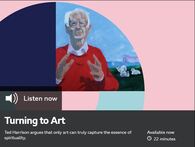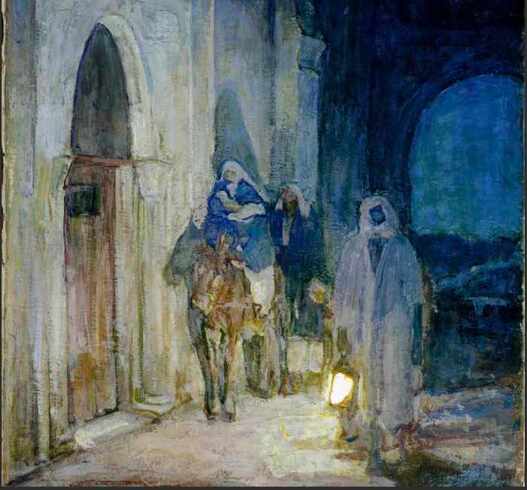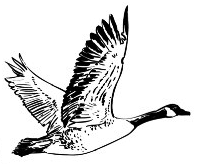Art as a resource for feral explorers
Posted by Henry
The craft of painting “ calls for imagination, and skill of hand, in order to discover things not seen… and to give them form with the hand, presenting to plain sight what does not actually exist.” Cennino Cennini
I was hopeless at art at school, but fell in love with art galleries in my teens. What initially struck me was how different artists from different centuries and continents could depict Biblical scenes so differently. It got me questioning ‘why?” I’ve moved on since to see that any good art is attempting to communicate something deep and meaningful, and is therefore worth taking seriously. It bypasses my thinking and often touches my soul, which frequently draws me to an image that I have to look at for some time before realising why my soul has taken me to it.
The Visual Commentary on Scripture is an online resource offering images from the Bible with commentary that are easy to access. They also offer a weekly download you can subscribe to, with special features during Advent/Christmas and Lent/Easter.
I’m a big admirer of the artist David Hockney. His book ‘Spring cannot be cancelled’ is a great source of inspiration. He often says of life that “there is a great deal to look at” and that is so true. Art has taught me to look, and to spend time looking. You may think that a tree is a brown thing with green on the top, but look carefully and its all manner of different colours. When I go for a walk I like to stop and just look at a view: the more I look the more I see, and the experience of looking changes something in me.
There is a wonderful app ‘artDatabase’ which for free will allow you look at and download a vast number of images form a handful of well-known artists, and for an additional small sum you can access many, many more. It’s a treasure trove.
John Drury has written a fine book ‘Painting the Word’ about Christian art.
I was hopeless at art at school, but fell in love with art galleries in my teens. What initially struck me was how different artists from different centuries and continents could depict Biblical scenes so differently. It got me questioning ‘why?” I’ve moved on since to see that any good art is attempting to communicate something deep and meaningful, and is therefore worth taking seriously. It bypasses my thinking and often touches my soul, which frequently draws me to an image that I have to look at for some time before realising why my soul has taken me to it.
The Visual Commentary on Scripture is an online resource offering images from the Bible with commentary that are easy to access. They also offer a weekly download you can subscribe to, with special features during Advent/Christmas and Lent/Easter.
I’m a big admirer of the artist David Hockney. His book ‘Spring cannot be cancelled’ is a great source of inspiration. He often says of life that “there is a great deal to look at” and that is so true. Art has taught me to look, and to spend time looking. You may think that a tree is a brown thing with green on the top, but look carefully and its all manner of different colours. When I go for a walk I like to stop and just look at a view: the more I look the more I see, and the experience of looking changes something in me.
There is a wonderful app ‘artDatabase’ which for free will allow you look at and download a vast number of images form a handful of well-known artists, and for an additional small sum you can access many, many more. It’s a treasure trove.
John Drury has written a fine book ‘Painting the Word’ about Christian art.

Ted Harrison argues that only art can truly capture the essence of spirituality
'Four Thoughts', a BBC R4 programme broadcast in February 2023. Link
'Four Thoughts', a BBC R4 programme broadcast in February 2023. Link
Architecture and the spiritual dimension
The Rothko Chapel: the transformation of power
The Rothko Chapel’s mission is to create opportunities for spiritual growth and dialogue that illuminate our shared humanity and inspire action leading to a world in which all are treated with dignity and respect. See website and video here.
The Rothko Chapel: the transformation of power
The Rothko Chapel’s mission is to create opportunities for spiritual growth and dialogue that illuminate our shared humanity and inspire action leading to a world in which all are treated with dignity and respect. See website and video here.
The Flight into Egypt by Henry Ossawa Tanner [1859-1937]

The journey of Jesus, Mary, and Joseph to the land of Egypt takes place under the cover of darkness. The fact that it happens ‘by night’ (Matthew 2:14) underscores the urgent note of danger and the threat of death. As the angel announces to Joseph, Herod is seeking to ‘destroy’ the child (Matthew 2:13).
Henry Ossawa Tanner was was the son of a former slave and pastor who fled the southern states for safety in the north later becoming Bishop of the African Methodist Episcopal Church. The artist was haunted by this story of flight, He painted no less than fifteen versions of it. Here, the fugitive character of the Holy Family is clearly foregrounded. With strong shades of blue and the use of shadows to intensify the drama, Tanner heightens the sense of forced migration. Mary’s donkey keeps close to the wall, moving slowly as if to avoid detection. The child is kept close to his mother’s breast, safely secured in her cloak, almost invisible. Joseph brings up the rear, fulfilling his traditional role as protector of the Holy Family. This is a family on the run, their ultimate destination uncertain. Yet there are also visual clues that the fugitive family will find a ready welcome amongst the strangers they encounter.
First, they are escorted by an anonymous figure, leading them through the darkened streets. The intensity of the light emanating from the lamp he carries, illuminating their path, is a reminder that this child too will be a ‘great light’ for the people dwelling in darkness (Matthew 4:16, quoting Isaiah 9:2).
Second, the location of this scene is uncertain. Is it Bethlehem? Yet the family has apparently just passed through the gateway (suggested by the arch just visible in the background) into the town. More likely, then, they have arrived at their first port of call, offering a temporary respite from the dangers of Herod’s henchmen. Henry Morgan
With thanks to father Patrick van der Vorst of ‘Christian Art’. First posted in http://contemporaryspirituality.blog
Henry Ossawa Tanner was was the son of a former slave and pastor who fled the southern states for safety in the north later becoming Bishop of the African Methodist Episcopal Church. The artist was haunted by this story of flight, He painted no less than fifteen versions of it. Here, the fugitive character of the Holy Family is clearly foregrounded. With strong shades of blue and the use of shadows to intensify the drama, Tanner heightens the sense of forced migration. Mary’s donkey keeps close to the wall, moving slowly as if to avoid detection. The child is kept close to his mother’s breast, safely secured in her cloak, almost invisible. Joseph brings up the rear, fulfilling his traditional role as protector of the Holy Family. This is a family on the run, their ultimate destination uncertain. Yet there are also visual clues that the fugitive family will find a ready welcome amongst the strangers they encounter.
First, they are escorted by an anonymous figure, leading them through the darkened streets. The intensity of the light emanating from the lamp he carries, illuminating their path, is a reminder that this child too will be a ‘great light’ for the people dwelling in darkness (Matthew 4:16, quoting Isaiah 9:2).
Second, the location of this scene is uncertain. Is it Bethlehem? Yet the family has apparently just passed through the gateway (suggested by the arch just visible in the background) into the town. More likely, then, they have arrived at their first port of call, offering a temporary respite from the dangers of Herod’s henchmen. Henry Morgan
With thanks to father Patrick van der Vorst of ‘Christian Art’. First posted in http://contemporaryspirituality.blog
